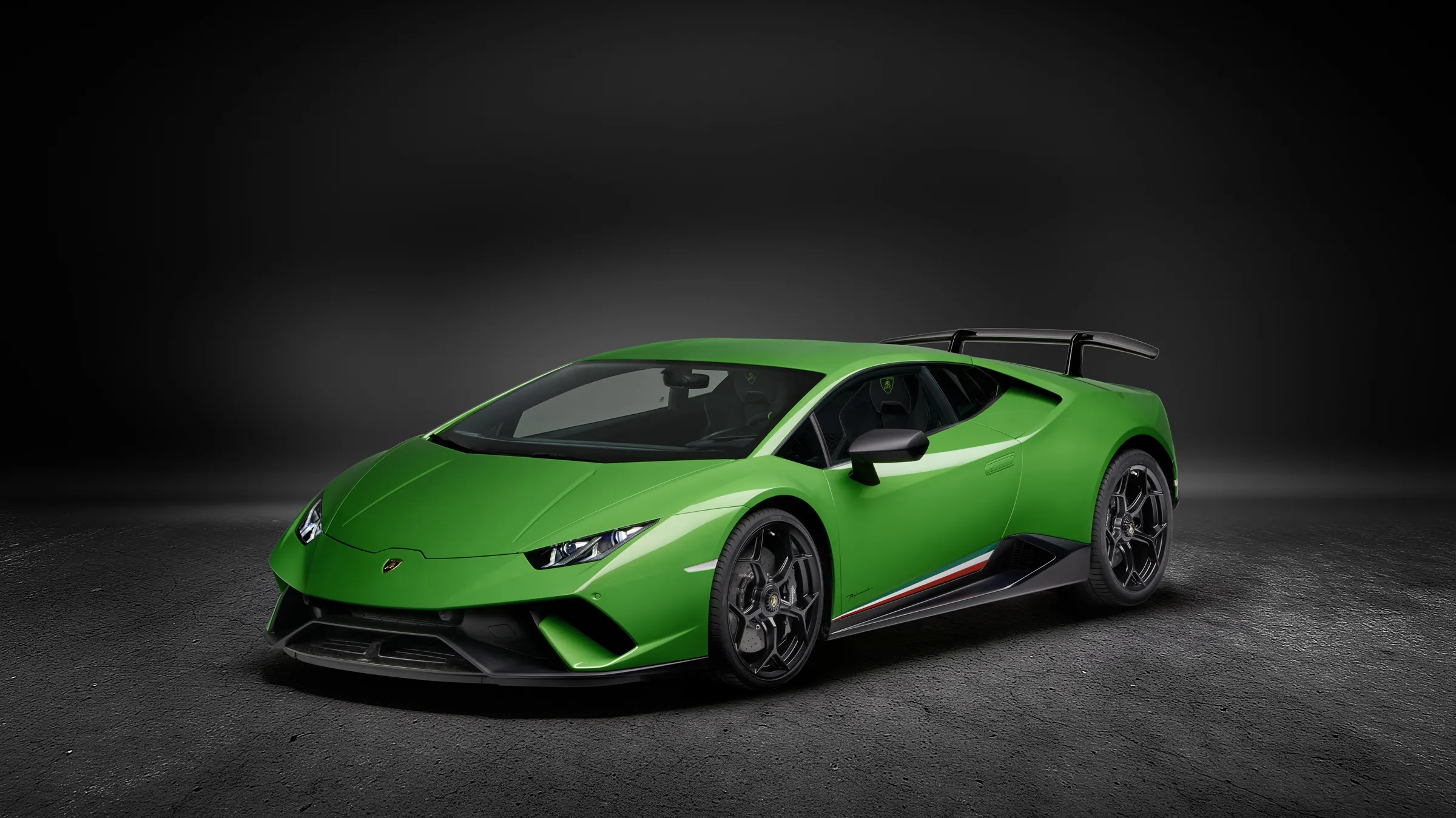Braking performance is one of the most critical aspects of a vehicle’s safety and performance, yet it’s often overshadowed by horsepower figures, top speed stats, or acceleration times. While a car’s ability to go fast is thrilling, its capacity to stop efficiently, especially under pressure, is arguably more important.
Whether it’s during emergency braking, spirited driving, or navigating sharp corners at high speeds, the quality and effectiveness of a car’s braking system can make or break the driving experience.
In fact, high-performance braking isn’t just about coming to a halt; it’s about stability, consistency, heat dissipation, and driver confidence under all conditions.
Some cars, especially in the performance and supercar segments, are engineered with world-class braking systems right from the factory.
These braking systems are often designed using exotic materials like carbon-ceramic composites, massive multi-piston calipers, and specially designed rotors that are optimized for heat dissipation and durability.
Cars in this category—what we’ll refer to as having “legendary brakes”—not only perform well in track conditions but also inspire confidence during everyday driving. These are the kinds of vehicles where the braking power matches or even exceeds their acceleration potential, making them marvels of automotive engineering.
On the other hand, there are cars—some surprisingly from reputable manufacturers—that have gained notoriety for their poor stopping performance. These vehicles either lack braking consistency, suffer from severe fade under repeated use, or exhibit long stopping distances even under normal conditions.
Sometimes it’s a matter of cost-cutting, design flaws, or simply a mismatch between the vehicle’s performance output and its braking hardware.
In this article, we’ll explore both extremes: five cars that are praised for their exceptional braking capabilities, and five that are infamous for their underwhelming or even dangerous stopping power.
Understanding these extremes is crucial not only for car enthusiasts but also for anyone who prioritizes safety and performance in real-world driving scenarios.
Also Read: 5 Cars That Easily Pass 250K Miles and 5 That Rarely Get Close
5 Cars With Legendary Brakes
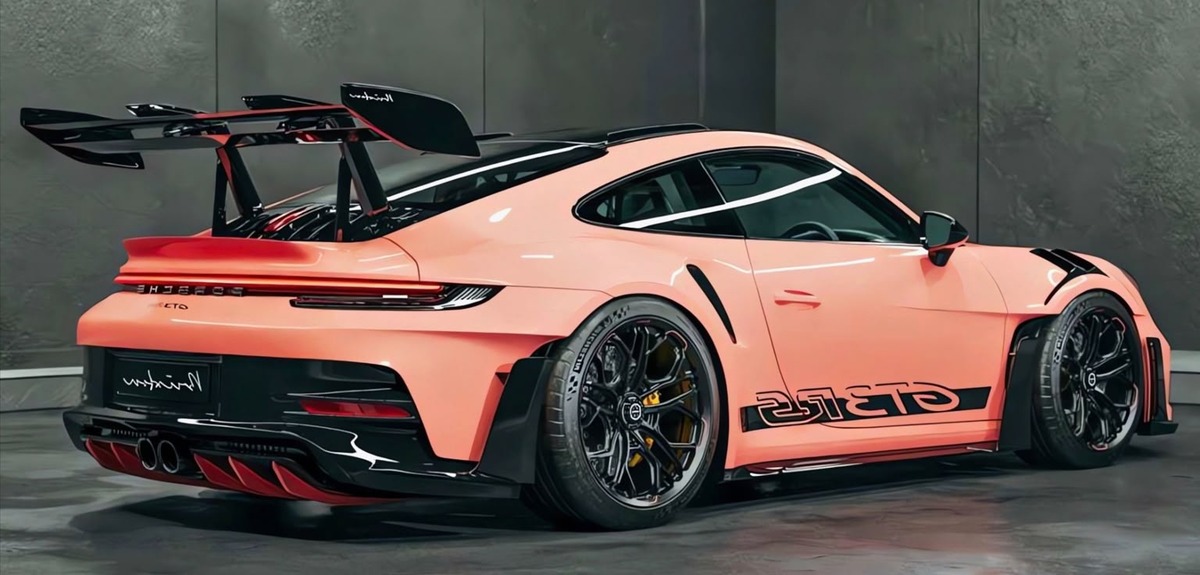
1. Porsche 911 GT3 RS
The Porsche 911 GT3 RS is the epitome of performance precision, and a large part of that reputation comes from its phenomenal braking system.
Porsche has consistently set benchmarks in the performance car world, and the GT3 RS is a track-focused version of the iconic 911 that demonstrates just how refined and advanced a braking system can be.
With its massive carbon-ceramic rotors, lightweight aluminum calipers, and adaptive brake force distribution, the GT3 RS is capable of stopping from high speeds with a level of consistency that’s nearly unmatched.
Whether you’re doing laps on the Nürburgring or navigating winding mountain roads, the brakes remain firm, fade-resistant, and confidence-inspiring.
One of the defining features of the GT3 RS braking system is its ability to resist brake fade, even after repeated hard stops. Track drivers often push their vehicles to the limit, and in lesser cars, brake components begin to overheat, causing the pedal to go soft and stopping distances to increase.
Not so with the GT3 RS. Porsche’s engineering excellence includes proper brake cooling, low unsprung weight for better response, and materials designed to maintain thermal stability. These characteristics make the car not only fast in terms of acceleration but equally competent when shedding speed quickly and safely.
Beyond just the hardware, the GT3 RS also benefits from Porsche’s electronic brake control systems, including stability management and anti-lock braking that are tuned specifically for high-performance driving. This means the driver can exploit the car’s full potential without fear of brake lock-up or uneven deceleration.
Whether you’re a professional racer or a passionate enthusiast, the braking performance of the 911 GT3 RS represents the pinnacle of what factory-engineered systems can achieve.

2. Lamborghini Huracán Performante
Lamborghini’s Huracán Performante is not only known for its aggressive styling and V10 scream—it’s also celebrated for its exceptional braking capabilities. The car comes equipped with carbon-ceramic brakes as standard, which provide incredible stopping power while reducing brake fade significantly.
These brakes are massive, paired with multi-piston calipers and ventilated rotors to maximize heat dissipation. This is crucial when you’re talking about a car that can reach over 200 mph; being able to decelerate quickly and safely from those speeds is a fundamental requirement for performance and safety.
What makes the Huracán Performante’s brakes particularly remarkable is how intuitive they feel. There’s a linear response from the moment you touch the pedal, giving the driver precise control even during extreme braking.
The calibration of the ABS system is also exceptional, allowing for aggressive braking into corners without the instability that sometimes plagues even high-end cars.
The ability to trail-brake into a turn with confidence is a major advantage on the track, and it’s something the Performante allows with ease, thanks to its well-integrated electronics and feedback-rich pedal feel.
Lamborghini’s use of forged materials and aerodynamic enhancements (like the ALA active aerodynamics system) also contributes indirectly to braking efficiency by improving downforce, which in turn increases tire grip under heavy braking.
The result is a supercar that not only dazzles with its straight-line speed but impresses even more with how quickly and predictably it can come to a halt. The Huracán Performante proves that braking performance is as important as any other metric in the supercar world.
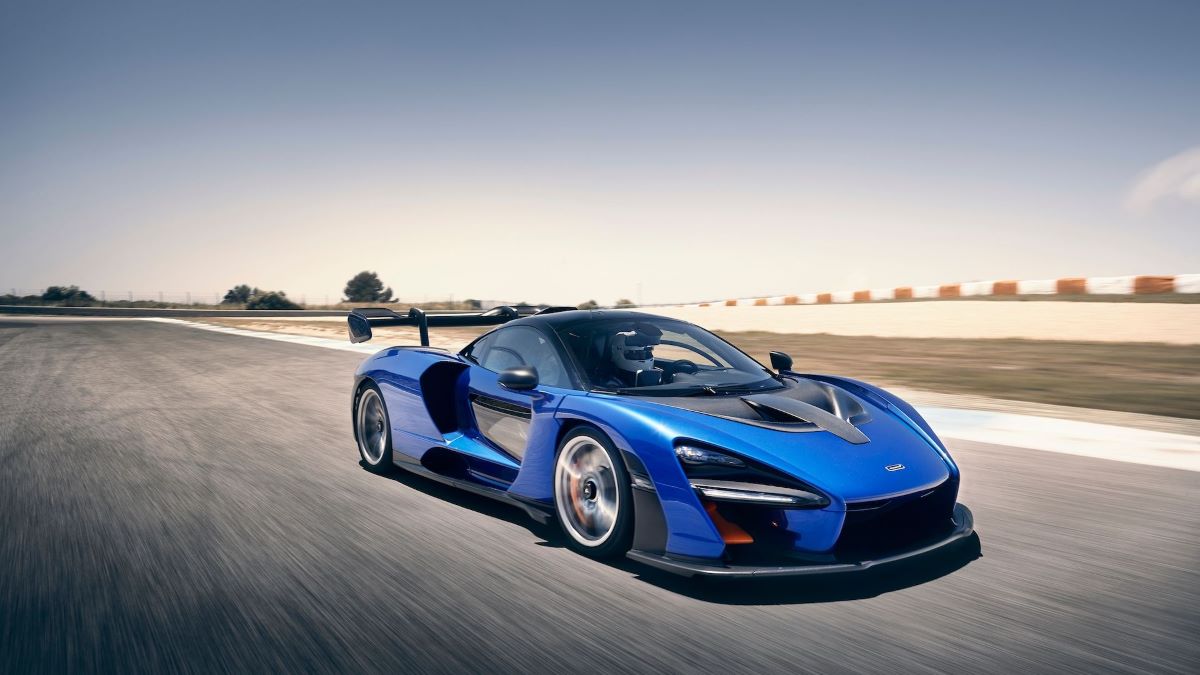
3. McLaren Senna
When McLaren introduced the Senna, it was clear that this car would set a new standard for track-oriented hypercars. Named after legendary Formula 1 driver Ayrton Senna, the car was built with one purpose: to dominate the circuit. Central to that purpose was an extreme focus on braking performance.
The Senna’s braking system is not only among the most powerful ever fitted to a road car, but also among the most technologically advanced.
It features carbon-ceramic discs that are larger and thicker than those found on most other hypercars, and they’re paired with custom-developed Brembo calipers engineered to withstand the most punishing track conditions.
McLaren went to extraordinary lengths in the development of the Senna’s braking system. The carbon-ceramic discs undergo an extensive 7-month manufacturing process, including sintering at ultra-high temperatures to ensure structural integrity and maximum heat tolerance.
The result is a set of brakes that can repeatedly bring the car to a stop from 200+ mph with almost no fade and astonishingly short stopping distances. In fact, the Senna can decelerate from 124 mph to a dead stop in just 100 meters, a feat that few other road-legal vehicles can match.
Braking in the Senna is more than just a mechanical function—it’s an integrated part of the car’s dynamic control system. The active aero system adjusts in real-time to assist with high-speed deceleration by increasing rear downforce, essentially turning the rear wing into an air brake.
Combined with the car’s extremely low weight and race-tuned suspension, this allows the driver to brake later into corners and accelerate sooner out of them, offering an experience that feels closer to a Le Mans prototype than a road car. The Senna’s braking system is nothing short of a technological masterpiece.
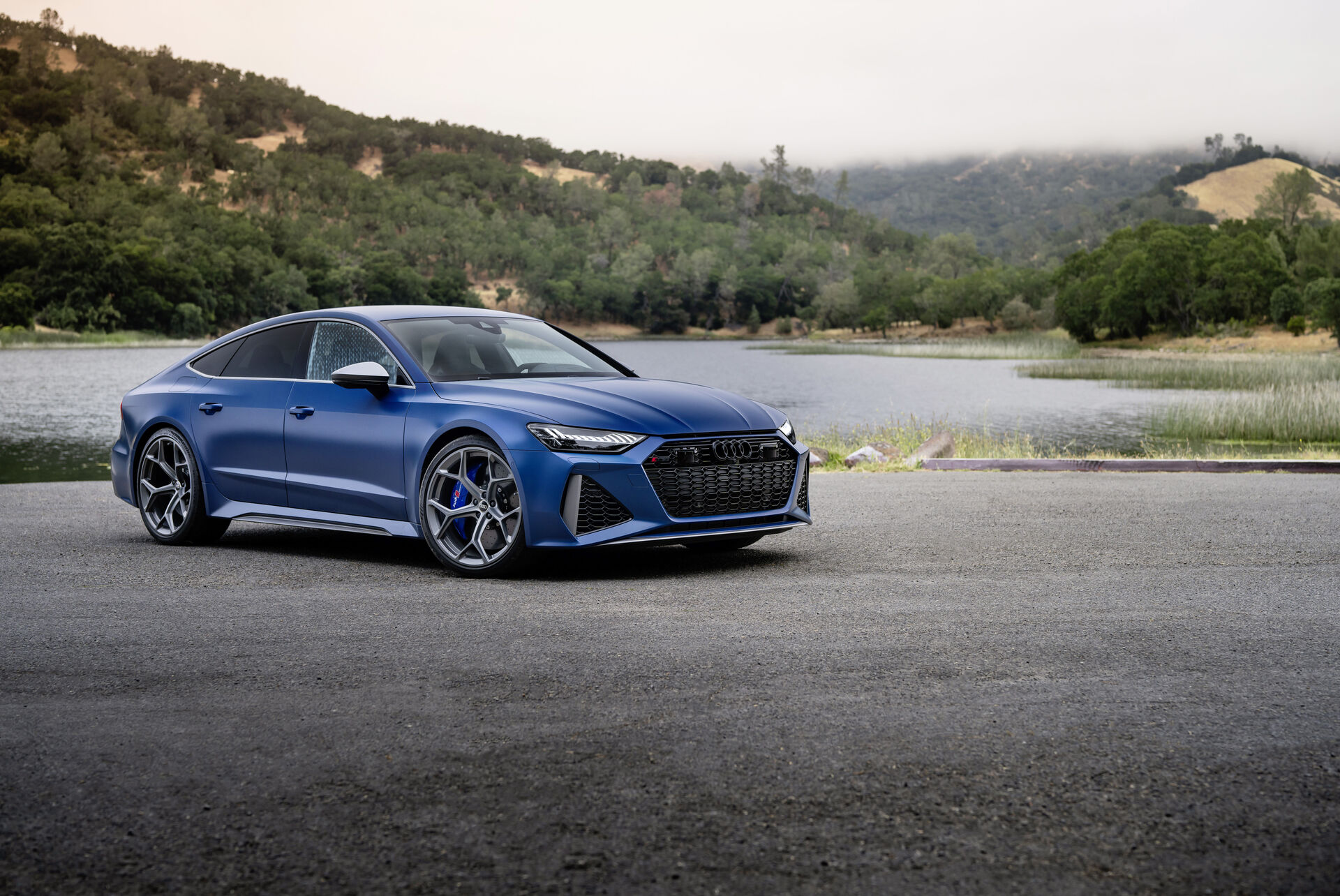
4. Audi RS7 Performance
The Audi RS7 Performance is a four-door luxury sportback that hides a beastly personality beneath its elegant design. It’s powered by a twin-turbocharged V8 engine producing over 600 horsepower, and while that might attract most of the headlines, what truly makes this car a standout in its class is the precision and effectiveness of its braking system.
Audi didn’t skimp when engineering the RS7’s stopping power. The car comes equipped with massive ventilated disc brakes and optional carbon-ceramic rotors that deliver astonishing performance under pressure.
These aren’t just performance add-ons—they fundamentally redefine how the RS7 handles high-speed driving, heavy braking scenarios, and repeated deceleration without a trace of fade.
The carbon-ceramic setup not only reduces unsprung weight but also offers greater resistance to heat buildup, enabling the car to come to a complete stop from high speeds with unflinching confidence.
Braking in the RS7 Performance is more than just a mechanical interaction—it’s an experience of synergy between power and precision. The pedal feel is firm yet progressive, allowing the driver to modulate pressure perfectly, whether navigating tight city traffic or executing a hard braking maneuver at triple-digit speeds.
The brake balance is meticulously tuned to work in harmony with Audi’s legendary Quattro all-wheel-drive system. This means that no matter the road conditions—wet, dry, icy—the RS7 maintains outstanding composure when stopping.
The electronic stability control and anti-lock braking systems are tuned not to intrude too early, allowing drivers a surprising amount of control even when pushing the limits. In track tests and independent braking assessments, the RS7 has regularly demonstrated shorter stopping distances than many lighter, smaller sports cars—proof of just how far Audi has pushed the envelope in brake engineering.
In daily driving, the brakes on the RS7 also shine due to their seamless integration with the car’s driving modes. Whether cruising in comfort mode or unleashing full power in dynamic mode, the brake system adjusts accordingly, providing a level of refinement that’s expected in a high-end German performance car.
Despite its nearly 5,000-pound curb weight, the RS7 stops with authority and grace. It’s a masterclass in how to balance luxury, technology, and extreme braking performance into a single, road-worthy package.
For those looking for blistering speed wrapped in executive elegance, without compromising on the ability to bring that speed to a dead stop, the RS7 Performance is a benchmark in its category.
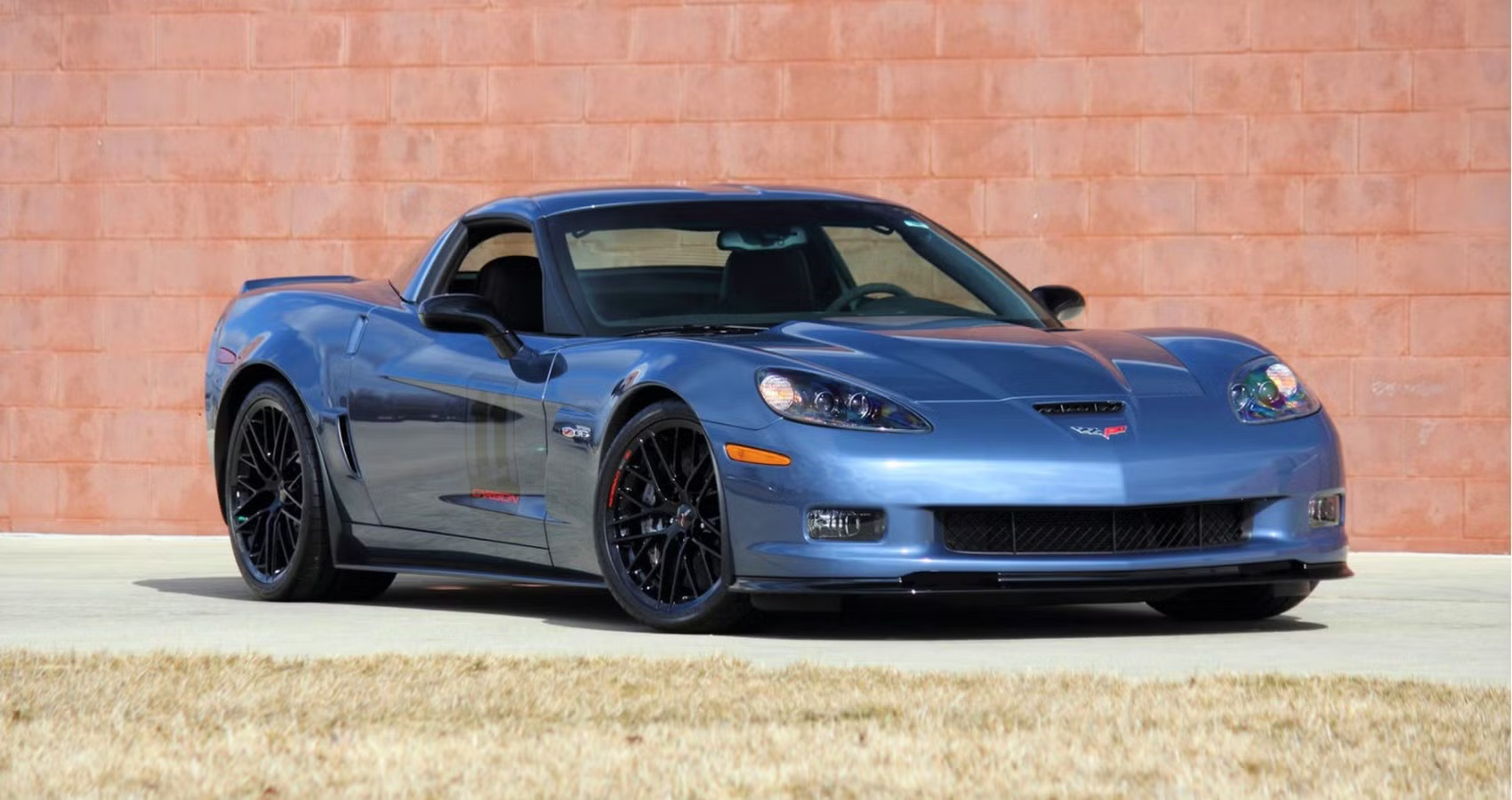
5. Chevrolet Corvette Z06 (C7 Generation)
The C7-generation Chevrolet Corvette Z06 represents a milestone for American performance engineering, and part of what makes it so revered is its absolutely world-class braking system.
While the Z06 offers immense straight-line performance thanks to a supercharged V8 pushing 650 horsepower, what’s even more impressive is its ability to shed that speed with surgical precision.
From the factory, the Z06 comes standard with high-performance Brembo brakes—massive six-piston calipers in the front and four-piston units in the rear.
Optional carbon-ceramic rotors elevate braking performance even further, especially for those intending to take the Z06 to the track. These rotors significantly reduce heat buildup, fade, and unsprung weight, resulting in consistently short stopping distances and confident brake feel no matter how hard the car is pushed.
What sets the Z06 apart from other performance cars in its class is not just the size and quality of its components, but how well they’re integrated into the car’s chassis and driving dynamics.
The Z06 features a race-inspired cooling system that channels airflow directly to the brake rotors, ensuring they stay cool during prolonged sessions of aggressive driving.
This level of thermal management is crucial for track use, where many cars—even those with high-performance credentials—experience diminished braking capability after a few laps.
The Z06, however, continues to deliver lap after lap. In tests conducted by automotive publications, the Z06 has recorded 60–0 mph stopping distances of under 100 feet—an elite number that puts it in the same league as purpose-built supercars costing twice as much.
Even more importantly, the feedback through the brake pedal is incredibly reassuring. Drivers note that the brake system offers exceptional modulation, making it easy to apply just the right amount of pressure, whether you’re trail braking into a corner or executing a panic stop on the street.
The progressive pedal feel combined with the immense clamping power allows drivers to exploit the car’s grip to its fullest without overwhelming the tires or losing stability.
For a vehicle that can go toe-to-toe with European giants on the track, the Corvette Z06 doesn’t just rely on brute force—it leverages precision stopping power as a core part of its performance arsenal.
The C7 Z06 proves that American muscle can also deliver finesse, particularly when it comes to bringing all that horsepower to a graceful and controlled halt.
5 Cars With Infamous Stopping Power

1. Jeep Wrangler (JK and early JL models)
The Jeep Wrangler is an off-road icon, known for its ruggedness and trail-conquering abilities. However, when it comes to on-road braking performance, especially in the JK and early JL model years, it has faced persistent criticism.
These vehicles were never designed with performance driving in mind, but their lackluster braking has raised concerns even during daily driving scenarios.
Long stopping distances, vague pedal feel, and noticeable brake fade during repeated stops are some of the common complaints among Wrangler owners. This is particularly worrisome considering the high center of gravity and the increasing weight of newer models.
One of the primary issues is that the Wrangler’s braking hardware often seems under-specced for the vehicle’s size and weight. The rotors and calipers are adequate for casual driving, but they struggle under more demanding conditions, such as towing or descending steep grades.
During emergency stops, the vehicle has a tendency to nosedive significantly, and in some cases, steering stability can be compromised. The ABS, while present, does not always inspire confidence, especially on wet or loose surfaces. These braking shortcomings are amplified when larger aftermarket tires are installed, which further degrade performance.
Although newer JL versions have seen improvements in braking systems with larger rotors and more robust calipers, the legacy of poor braking performance still lingers.
For a vehicle that’s becoming more popular among urban drivers and families, the importance of solid on-road braking cannot be overstated. Until Jeep fully addresses these issues across the entire Wrangler lineup, it remains a vehicle whose stopping power is infamous among both reviewers and owners alike.
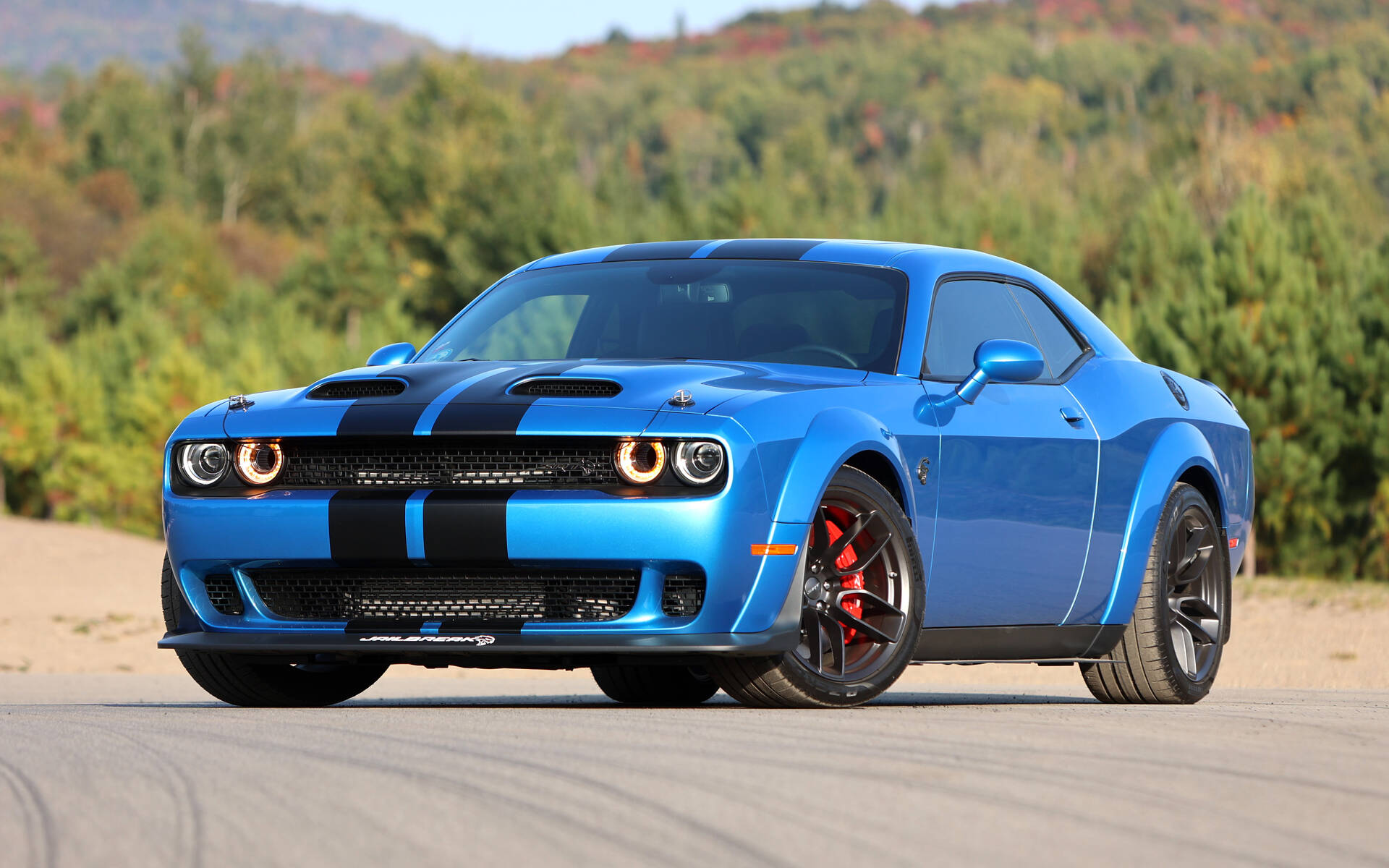
2. Dodge Challenger Hellcat
The Dodge Challenger Hellcat is a monster of a muscle car, boasting over 700 horsepower and the ability to blast from 0 to 60 in just over three seconds. Unfortunately, all that straight-line speed isn’t paired with braking capabilities of equal caliber—at least not in the earlier production years.
Despite being equipped with Brembo brakes, the Hellcat has struggled with excessive stopping distances, especially under repeated high-speed use. One of the main issues is the sheer weight of the vehicle, tipping the scales at over 4,400 pounds, making it extremely challenging to bring to a quick halt.
The problem isn’t just about the braking hardware, but also about how the car’s dynamics interact with that hardware. Under hard braking, the Hellcat can feel nose-heavy and sluggish to respond. Brake fade sets in quickly when the car is pushed hard, which is particularly concerning for drivers who enjoy performance driving or take their cars to the track.
Though the brakes look great on paper—featuring large rotors and six-piston calipers in the front—the reality is that the car’s mass and power work against it, making it difficult to consistently stop with confidence.
While Dodge has made some improvements over time with the addition of wider tires and updated brake systems, the Hellcat’s early models still carry a reputation for underwhelming braking performance.
Owners who upgrade their vehicles often find themselves investing in high-performance brake kits to compensate for the stock setup’s shortcomings. For a car with such mind-boggling power, the lack of equally impressive stopping power makes the Hellcat a textbook case of imbalance between go and stop.
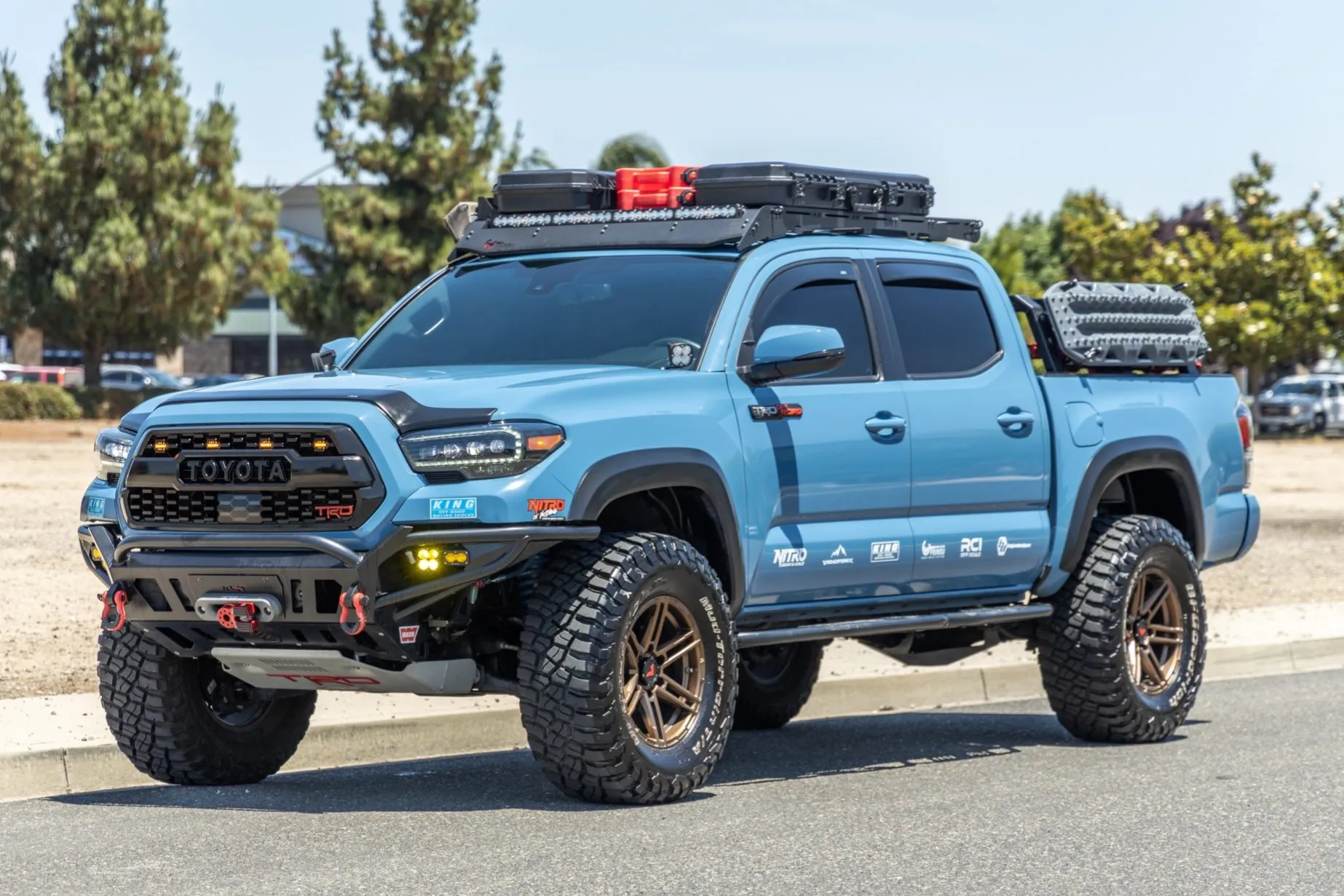
3. Toyota Tacoma (2005–2015)
The Toyota Tacoma is widely respected for its durability, off-road capability, and long-term reliability. However, for all its strengths, braking performance has long been a weakness, especially in the second-generation models from 2005 to 2015.
During this period, the Tacoma gained a reputation for sluggish, underwhelming braking that seemed to struggle even under normal driving conditions. Many owners and reviewers noted that the brakes felt soft, with excessive pedal travel and a lack of bite.
This vague brake feel often resulted in drivers needing to press the pedal deeper than expected, which in emergency scenarios, could mean the difference between a close call and a collision.
The stopping distances on these trucks were also noticeably longer than those of competitors, which is especially concerning given the Tacoma’s popularity as a daily driver and work truck.
One of the root causes of this problem lies in the braking hardware itself. The stock Tacoma of this generation typically featured relatively small front disc brakes and, in many configurations, outdated rear drum brakes.
While drum brakes are more than adequate for low-speed or lightweight vehicles, they’re simply not up to the task on a mid-size pickup that regularly carries heavy loads or ventures off-road.
When towing or descending steep grades, drivers often reported brake fade after just a few minutes of moderate use. This fade would lead to a spongy pedal feel, reduced response, and a notable decline in stopping power, posing serious safety risks under heavy load or on long downhill sections.
Even Toyota enthusiasts who swore by the truck’s longevity often found themselves upgrading the braking system just to bring performance up to par with the competition.
Despite being bulletproof in many other categories, the Tacoma’s subpar braking became a sticking point, especially as competitors like the Ford Ranger and Chevy Colorado began offering more robust and responsive brake systems.
Toyota did make some incremental improvements in later models, but the reputation of this generation’s poor stopping performance still lingers.
Owners often turn to aftermarket solutions like big brake kits, rear disc conversions, and stainless steel brake lines to restore confidence. For a vehicle that excels in so many areas, the Tacoma’s infamous braking performance in these model years remains one of its most glaring flaws—proof that even legends can have weak spots.
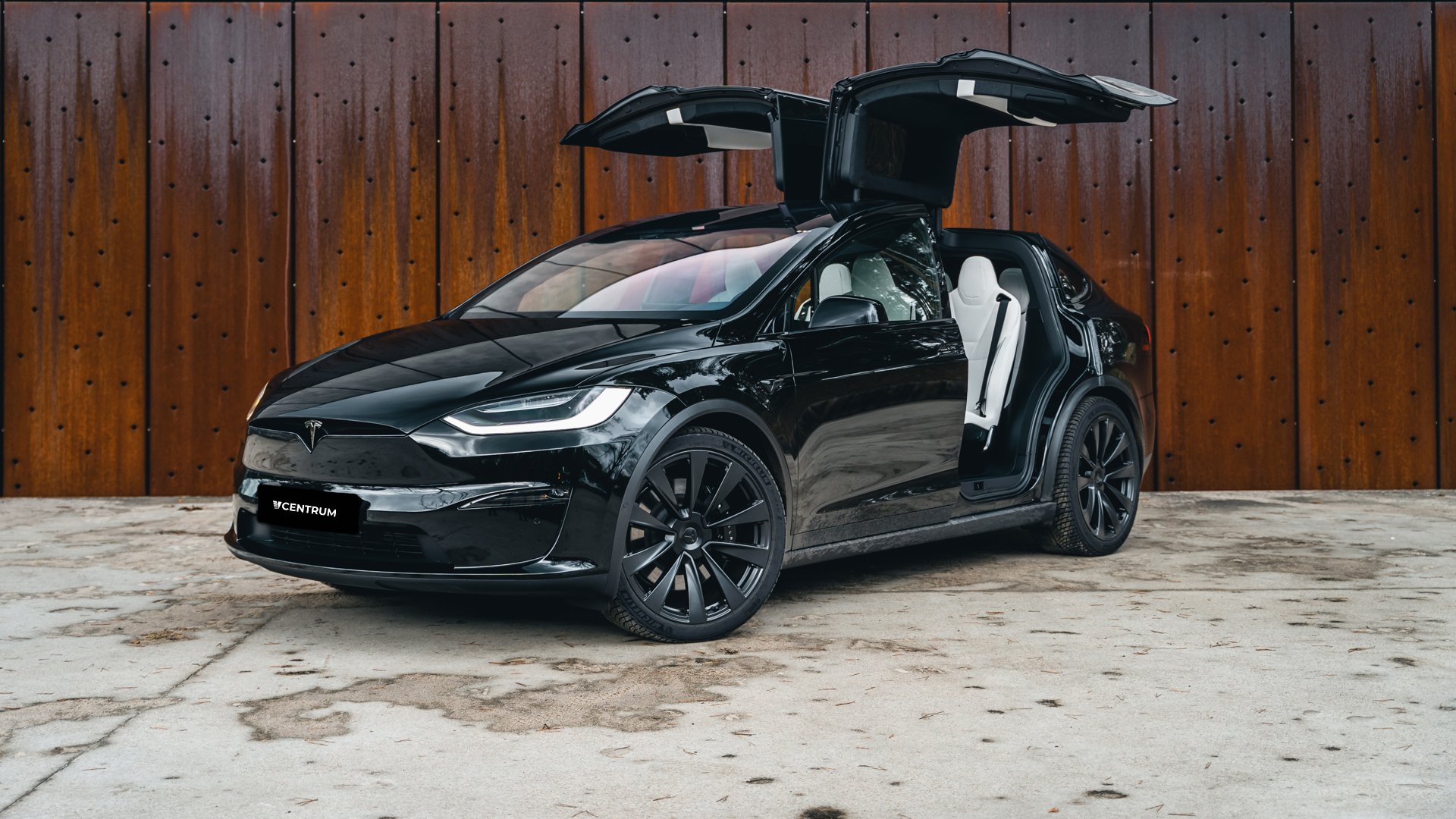
4. Tesla Model X (Early Models, 2016–2018)
Tesla’s Model X broke boundaries when it launched, showcasing what an all-electric SUV could be with jaw-dropping acceleration, cutting-edge tech, and a futuristic design.
However, in the early years of production (particularly between 2016 and 2018), the Model X suffered from serious braking concerns that undermined its otherwise impressive performance profile.
The issues stemmed from a combination of factors, most notably the vehicle’s weight, which can exceed 5,500 pounds even before passengers or cargo. Early adopters and automotive reviewers noted that despite having decent-sized rotors and calipers, the Model X struggled with inconsistent braking performance.
Under emergency stops or repeated deceleration from high speeds, the brakes would heat up quickly and exhibit fade, far from ideal for a family-oriented, high-performance SUV.
Another major issue with the Model X’s braking came to light in a widely publicized incident involving Consumer Reports. In initial brake testing, the Model X performed poorly, with stopping distances from 60 mph exceeding those of much larger, heavier SUVs.
The inconsistency was particularly troubling: one test would show relatively acceptable results, and the next would reveal significantly longer stopping distances.
Tesla responded to these concerns with a series of over-the-air updates aimed at improving braking algorithms and ABS calibration, which did eventually lead to better performance. Still, the fact that such a critical safety issue had to be patched through software—and that hardware limitations remained—left many prospective buyers wary.
Part of the problem is that the regenerative braking system, which helps slow down the vehicle using the electric motors, doesn’t fully engage during emergency stops.
This puts the entire burden on the mechanical brakes, which are already working overtime to manage the vehicle’s weight. Add in passengers, a full battery pack, and perhaps a trailer, and the system’s weaknesses are amplified.
Tesla has since made improvements in newer versions of the Model X with upgraded brake components and better software integration. But for the early models, the reputation for poor braking remains a blemish on an otherwise innovative vehicle, showing that even technological pioneers need to ensure the basics are covered when it comes to safety.
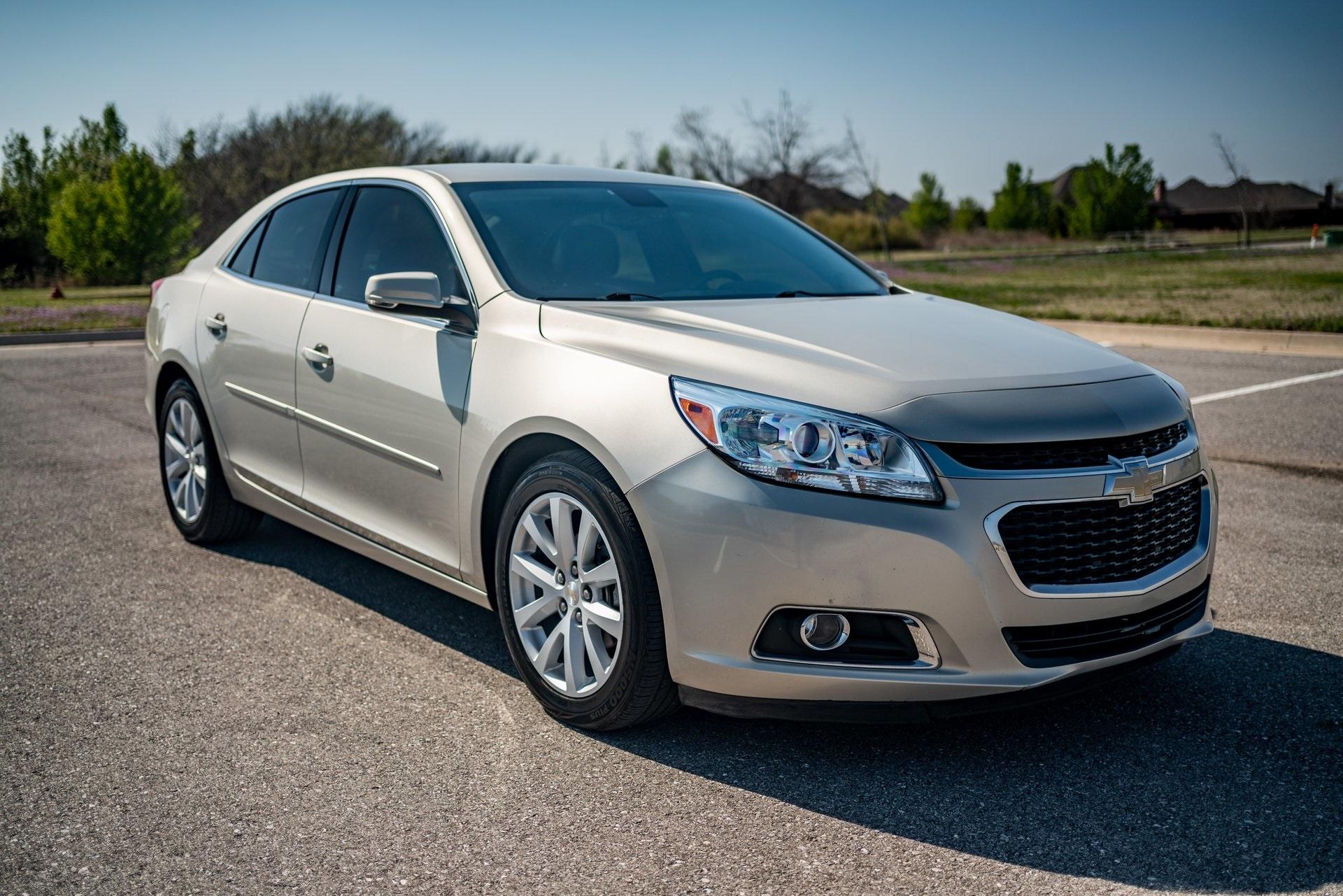
5. Chevrolet Malibu (2008–2012)
The Chevrolet Malibu is a staple of the American midsize sedan market, known for its affordability, spacious cabin, and commuter-friendly demeanor. However, during the 2008 to 2012 model years, the Malibu developed a reputation for lackluster braking performance that disappointed owners and raised serious concerns among safety advocates.
While it wasn’t designed to be a performance car, even in its base configuration, the Malibu’s brakes often struggled with long stopping distances, unresponsive pedal feel, and poor fade resistance, especially when the car was loaded with passengers or driven on hilly terrain.
Brake-related complaints during this era were common enough to spark several technical service bulletins and warranty claims, particularly regarding premature wear of brake pads and rotors.
One contributing factor was the relatively undersized brake hardware used across multiple trims, including some V6 models that arguably needed more robust systems to match their power output.
The front rotors were prone to warping, and many owners reported pulsation or vibration during braking after just 20,000 to 30,000 miles of use, much sooner than expected.
This led not only to reduced stopping efficiency but also to a degraded driving experience. Some even experienced brake pedal sinking or unexpected loss of brake assist, a critical issue in emergency scenarios.
While GM issued updates to components and calibration over time, the underlying design remained a weak point for the vehicle’s entire production cycle in these years.
The Malibu’s braking shortcomings became especially apparent when compared to its competitors in the segment, such as the Honda Accord and Mazda6, both of which offered tighter, more responsive braking systems that inspired more confidence.
For families using the Malibu as a primary mode of transportation, the lack of stopping power under duress was a major concern. Though the car offered solid crash-test ratings and good fuel economy, its reputation was hampered by this recurring issue.
It stands as a reminder that in the pursuit of affordability and mass-market appeal, essential performance elements like braking should never be compromised. For many drivers during this period, the Malibu’s brakes were more of a liability than an asset.
Also Read: You Can Still Buy This 1980s Engine Brand New From the Factory
Braking performance is not just a technical specification—it’s a cornerstone of safety, driver confidence, and real-world usability. Whether you’re carving up a canyon road, making a high-speed highway pass, or navigating stop-and-go city traffic, your car’s ability to stop effectively can be the difference between control and catastrophe.
This article has spotlighted both ends of the spectrum: vehicles that are engineered with legendary braking systems and those that have earned a reputation for poor, inconsistent, or downright dangerous stopping power.
On one side, cars like the Porsche 911 GT3 RS, McLaren Senna, and Corvette Z06 showcase what’s possible when manufacturers invest in high-performance brake systems that match the vehicle’s speed and agility.
These models incorporate advanced materials like carbon-ceramic rotors, massive multi-piston calipers, and sophisticated electronic stability controls.
The result isn’t just a shorter stopping distance—it’s a driving experience that feels safer, more predictable, and far more engaging. These cars perform with surgical precision, whether they’re on a racetrack or a winding back road.
They set a standard not only for how well a car can go, but how effectively it can stop, regardless of the circumstances. On the other hand, vehicles like the Jeep Wrangler, Tesla Model X (early models), and Chevrolet Malibu (2008–2012) serve as cautionary tales.
These are cars and trucks that, for one reason or another—be it cost-cutting, poor engineering, or overlooked weight dynamics—fail to deliver adequate stopping power for their size, purpose, or speed potential. In many cases, their brakes are either too small, too soft, or too prone to overheating.
And while some of these vehicles have since improved through hardware upgrades or software updates, the legacy of their brake-related flaws remains part of their identity.
For owners, this means a constant struggle with premature wear, inconsistent performance, and the anxiety of not being able to stop as confidently as expected—an unacceptable compromise in any modern vehicle.
The most important takeaway here is that braking systems should never be an afterthought. It’s easy to get caught up in horsepower, 0–60 times, or flashy infotainment systems, but none of that matters if your car can’t stop reliably in an emergency.
The true test of a well-balanced vehicle lies in its ability to do everything well—not just accelerate or look good, but also respond decisively when you hit the brakes.
If you’re shopping for a car, particularly in the performance or SUV segments, don’t just look at what’s under the hood—look at what’s behind the wheels. Evaluate rotor sizes, braking technology, fade resistance, and stopping distance stats. The difference could be more than just performance—it could be life-saving.
In the end, braking defines the line between potential and control. A vehicle’s ability to manage its speed and come to a stop safely is what makes high-performance driving not just thrilling, but viable.
And for everyday driving, solid braking gives you peace of mind every time you approach an intersection, descend a steep hill, or navigate through unpredictable traffic.
As automotive technology continues to evolve, we can only hope that every manufacturer prioritizes stopping power with the same urgency as speed and style—because real performance always includes the ability to come to a complete, confident stop.

